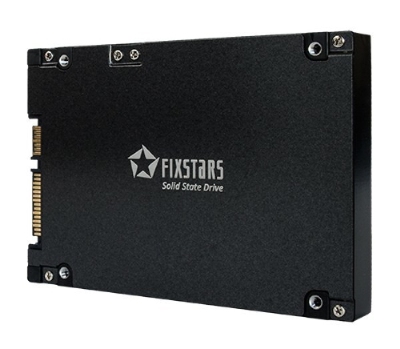Fixstars Releases 13 TB SSD for Specific Application Workloads
Fixstars announced a new high capacity SSD designed for object storage and digital streaming applications. The company has produced several high capacity SSDs in the past, but the new SSD-13000M raises the bar to 13 TB of data storage in a 2.5" form factor.
The new flagship model is said to deliver up to 540 MB/s sequential read and 520 MB/s sequential write performance. Fixstars uses a proprietary SSD processor that delivers enterprise reliability and consistent performance. The company didn't release any random performance data, but with a small DRAM buffer for page table mapping, the random read and write workload performance would be low in comparison to smaller capacity products shipping today.
This drive is optimized for sequential data, making it a what I call a NAS- or SAN-optimized SSD. Optimal workloads include object storage, streaming content distribution, CG/VFX production, and video processing.
"Continuing the development of the world's highest capacity SSD product line, we are pleased to take capacity one step further and present the SSD-13000M. The Fixstars SSD series has been highly regarded for their distinct reliability on steady read/write performance that lasts over time. Having met user expectations for higher capacities, Fixstars will continue to innovate and provide unique storage solutions to it's customers in Japan and in the U.S.," said Satoshi Miki, CEO of Fixstars Corporation.
Last year we tested a Fixstar SSD but found that the drive was not suitable for standard desktop performance testing due to the low random performance. The drive is designed for very specific workloads and should be used in conjunction with other identical drives in RAID arrays to serve content over networks. Fixstars has several design wins with previously released SSDs that are used for video production environments in Hollywood studios.
Chris Ramseyer is a Contributing Editor for Tom's Hardware, covering Storage. Follow him on Twitter and Facebook. Follow Tom's Hardware on Twitter, Facebook and Google+.
Get Tom's Hardware's best news and in-depth reviews, straight to your inbox.

Chris Ramseyer was a senior contributing editor for Tom's Hardware. He tested and reviewed consumer storage.
-
Gam3r01 :OReply
I dont see this being available to just any consumer. Nor would a normal user want one. -
John Wittenberg Yeah, 4 of these in a RAID 6 please..... or 8 of them if i'm honest.Reply
However, I'm certain that the price will be quite high. -
captaincharisma ReplyPrice? That's the only thing I need now.
if you have to ask you can't afford it
-
zodiacfml Wow, that was earlier than I expected. It has higher density compared to HDD. The highest is 10TB in a 3.5inch factor.Reply -
Nintendork 5K probably.Reply
In consumer land this would be nice for data/games, a replacement for fat HDD's. Now if SSD's with lower random performance would cost much less than a regular SSD we would have a nice HDD killer. -
quilciri slowly getting there. $0.30/GB now for the cheapest SSD's vs. $0.03 for the cheapest HDD'sReply -
blazorthon ReplyWow, that was earlier than I expected. It has higher density compared to HDD. The highest is 10TB in a 3.5inch factor.
SSDs have been able to be much denser for a while now, just still more expensive too. A 3.5" SSD with similar technology to this one might be able to reach between 100TB and 200TB, granted the costs could give people heart attacks.
